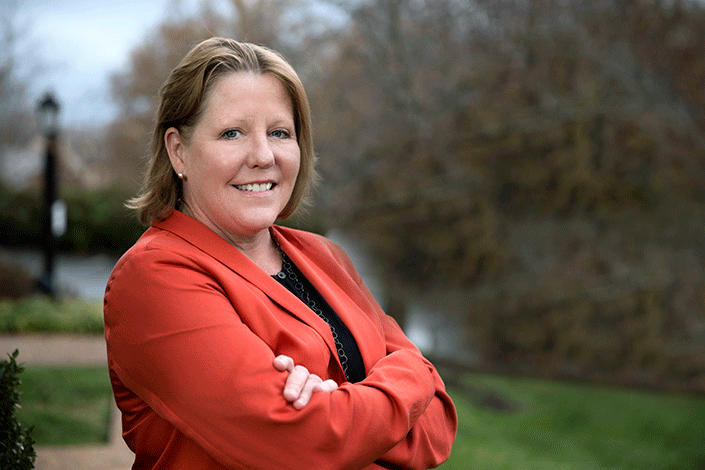The hit podcast “Serial” is over, but work for the Innocence Project at the University of Virginia’s School of Law, which has been helping with the show’s investigation of a 1999 murder, is revving up.
In the next several weeks, the project and U.Va. law students will draft and file a request for forensic testing, the results of which could shed light on the case of Adnan Syed, a Baltimore man sentenced to life for the murder of his ex-girlfriend, 17-year-old Hae-Min Lee. Students participating in the Innocence Project’s clinics get the chance to investigate and potentially litigate wrongful convictions.
U.Va. Law Innocence Project director Deirdre Enright appeared on the final episode of the series, which was posted online Thursday. She suggested an alternate suspect, and the show revealed that Syed agreed to have his DNA tested against the forensic evidence.
“The first step in any criminal investigation is to gather and preserve any and all physical evidence for forensic testing,” Enright said following the “Serial” finale. “This should always be the starting point in any serious criminal case.”
The crime scene – including Lee’s body – appears to have contained multiple sources of forensic information that were not pursued by either the defense or the prosecution, Enright said. Hairs not belonging to Lee were recovered from her body, and her fingernails were clipped and preserved, as was a rope found next to her partially buried remains. The evidence was not presented in court, Enright said, nor was it submitted to CODIS, the FBI’s DNA database, through which law enforcement checks for hits on potential perpetrators.
Students in Virginia Law’s for-credit Innocence Project Clinic and the related pro bono Innocence Project volunteer group have been tracking down leads in the case since March, after “Serial” narrator Sarah Koenig reached out to Enright for advice.
The final episode of the podcast revealed the name of one alternate suspect, Ronald Lee Moore, who the U.Va. students identified and developed as a possible lead. Third-year law student Mario Peia identified Moore as a suspect after finding a website that categorized Baltimore’s unsolved murders. Moore, who is now deceased, has been linked by authorities to two rapes and a woman’s murder. He was released from a Maryland prison on Jan. 1, 1999 – about two weeks prior to Lee’s murder.
On Dec. 13, Syed gave Enright permission to file a request for forensic testing with the Maryland State’s Attorney’s office.
“There’s nothing about my case I’m afraid of,” Syed said in the final podcast.
Enright said that while it is helpful to identify a solid alternate suspect when filing a request for testing, it should not be essential.
“Ronald Moore is certainly not the only other alternate suspect we are considering,” she said. “Any number of people could have committed this crime. This is the beauty of scientific results. It’s not about who you like for it – it’s about who can be identified, scientifically.”
But offering a plausible alternate suspect that the government failed to pursue can help the client’s chances for being granted forensic testing.
“Your client benefits from being able to point at someone else with motive or opportunity and at the same time, point at law enforcement’s failure to investigate,” she said. “In Adnan’s case, the jury was not offered an alternate suspect other than Jay [Syed’s friend, who testified against him].”
The tests, comparing the DNA of Moore and Syed to evidence gathered related to Lee’s death, could exclude Syed as the killer – or it could suggest his guilt.
“And of course, there’s always the third possibility – that the testing neither inculpates nor exculpates Adnan,” Enright said. “Many years have passed, and evidence can deteriorate and degrade.”
Enright said it was unclear how long it would take for forensic test results if the motion is granted.
“The Maryland officials we have spoken to so far have been very helpful and accommodating, and have laid out the process we need to follow,” she said. “Once we file our request, they will make a determination about whether to consent to testing. The primary issue is whether or not the forensic testing requested is likely to lead to Adnan’s exoneration.”
Exoneration through DNA isn’t the only way Syed could be released from jail.
“Even if forensic testing is not permitted, or generates no new evidence, we will continue our investigation of his case and then determine whether we have enough new evidence to file a writ of actual innocence based on non-biological evidence,” she said. “The combined efforts of Sarah Koenig and Syed’s team of supporters have already revealed many significant new facts that were never presented to the jury, and our investigation is far from complete.”
Media Contact
Article Information
December 23, 2014
/content/serial-case-goes-uva-law-s-innocence-project

